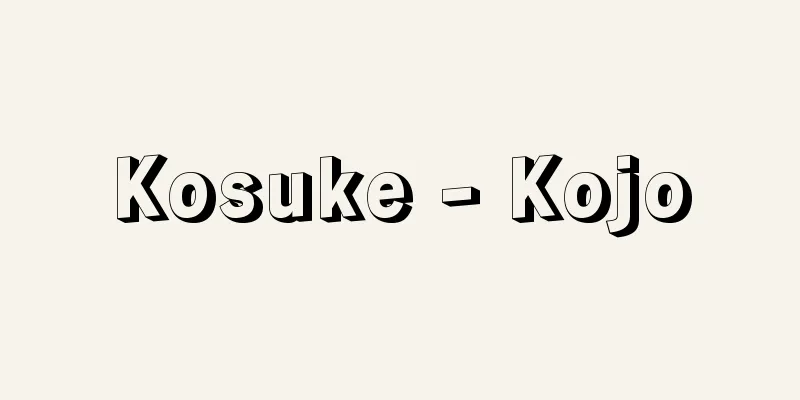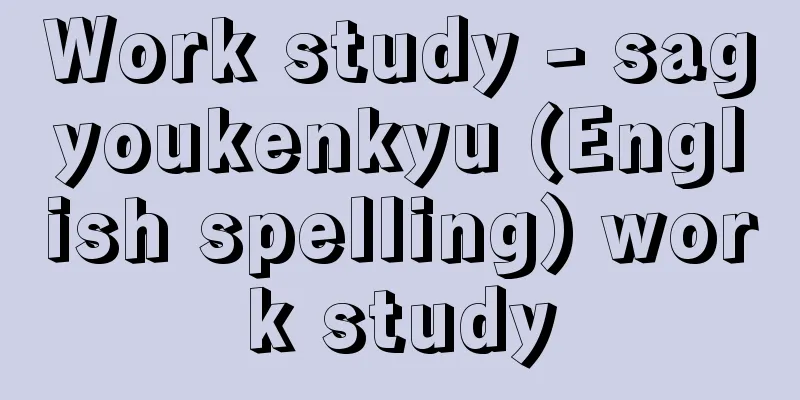Kosuke - Kojo

|
Years of birth: unknown. A Buddhist sculptor from the late Heian period. He is said to be the grandson of Kakusuke, the son of Yorisuke, and the father of Yasutomo. He is also written as Gosuke. He was a Nara Buddhist sculptor, but was also active in Kyoto after Yorisuke's death. In 1116, he was appointed Hokkyo for the work of creating the Buddha statue at Kasuga West Pagoda, and thereafter, he was frequently involved in the creation of Buddha statues for the retired emperors and regent families, such as the creation of the Shujoroku Amida statue at Hino Shindo, which was requested by Hino Munetada, in 1129. In 1140, he became Hokan for the creation of the Buddha statue at Kasuga Pagoda, which was requested by Emperor Toba. After that, in 1154, he handed over the award to Yasutomo for the creation of the Buddha statue at Toba Kongoshin-in, and the following year, in 1156, he was recorded as "Kosuke Hokkyo" for the creation of the Fudo statue at Anrakuju-in, which was requested by Fujiwara Tadazane (Heihan-ki). On the other hand, it is said that when constructing the statues at Hino Shindo, he measured the Jocho Buddha at the same temple as a reference at the behest of Munetada, and when you consider this, along with the request in his own handwritten letter to "make every bit of wood and board minutely," it is surmised that he made an effort to study the classics and put his own unique ingenuity into the woodworking. Regarding the remains, there is a theory that Kosuke presided over the construction of the 1,000 Thousand-Armed Kannon statues at Rengeo-in (Sanjusangendo) in 1164 (Chokan 2), and that his style can be traced to some of the 120 or so statues made in the Heian period, or that the statue of Dainichi Nyorai at Kongobu-ji Temple, said to be the principal image of the former Tanigami Dainichido Hall, was made by Kosuke in 1148 (Kyuan 4). <References> Keizaburo Mizuno, "Materials on the Buddhist sculptor Kosuke" (Art Research, No. 206), Tsuguhito Tanaka, "New historical materials on the Buddhist sculptor Kosuke" (Research on ancient Japanese Buddhist sculptors), Akira Takekasa, "Nara Buddhist sculptor Kosuke and the former Dainichi Nyorai statue at the Tanikami Dainichido Hall in Koyasan" (Buddhist Art, No. 189) (Kazuharu Asai) Source: Asahi Japanese Historical Biography: Asahi Shimbun Publications Inc. About Asahi Japanese Historical Biography |
|
生年:生没年不詳 平安後期の仏師。覚助の孫,頼助の子で康朝の父と伝えられる。豪助とも書く。奈良仏師だが頼助の死後,京都でも活躍した。永久4(1116)年春日西塔の造仏の功で法橋に叙せられ,以後,大治4(1129)年日野宗忠本願の日野新堂周丈六阿弥陀像の造立など,院・摂関家関係の造仏にしばしば携わり,保延6(1140)年には鳥羽院御願の春日御塔の造仏により法眼となる。その後,久寿1(1154)年の鳥羽金剛心院の造仏では賞を康朝に譲り,翌2年,藤原忠実本願の安楽寿院不動像の造立で「康助法橋」と記される(『兵範記』)まで,多数の活躍が知られる。一方,日野新堂の造像に際し,宗忠の命で同寺の定朝仏を実測して参考にしたと伝えられ,その自筆書状にみえる「木も板も細々に」との注文も合わせて考えると,彼は古典研究に努め,木寄せに独特の工夫をこらしたとも推測される。遺品については,長寛2(1164)年の蓮華王院(三十三間堂)千体千手観音造立を康助の主宰とし,平安時代作の百二十数体中の一部にその作風をたどる説,あるいは旧谷上大日堂本尊と伝えられる金剛峯寺大日如来像を,久安4(1148)年の康助の作に当てる説などがある。<参考文献>水野敬三郎「仏師康助資料」(『美術研究』206号),田中嗣人「仏師康助の新史料」(『日本古代仏師の研究』),武笠朗「奈良仏師康助と高野山谷上大日堂旧在大日如来像」(『仏教芸術』189号) (浅井和春) 出典 朝日日本歴史人物事典:(株)朝日新聞出版朝日日本歴史人物事典について 情報 |
Recommend
Path line system
…For this purpose, a certain format and proofread...
《Grundzüge der wissenschaftlichen Botanik》 (English notation) Grundzugederwissenschaftlichen Botanik
…His cell theory was perfected by T. Schwann, but...
Omaki - Omaki
〘 noun 〙① A part of a loom, a pole that winds up t...
Peters, CF
… In the second half of this century, with the de...
Clark, J.
...is a sport in which the engines and bodies of ...
Litvinov
Soviet politician. He participated in the revoluti...
Issued at face value - school
When issuing new public bonds or stocks, the act o...
Nagasaki Trade
Foreign trade was conducted through Nagasaki in t...
Kansai Paint - Kansai Paint
A leading paint manufacturer. Founded in 1918. Mer...
Oświęcim - Oświęcim (English spelling)
A city in the Małopolskie Voivodeship in southern...
Luchon (English spelling)
A town in the Haute-Garonne department in southern...
Zelyonyi
After the German withdrawal, the Makhnovist peasa...
Maritime Novel - Kaiyou Shosetsu
Maritime novels are written and read in any countr...
Kikenkobogun Ancient Tombs
A group of ancient tombs from the Shang to Han dyn...
Agriculture and Industry Bank
A special bank established under the Agricultural...









